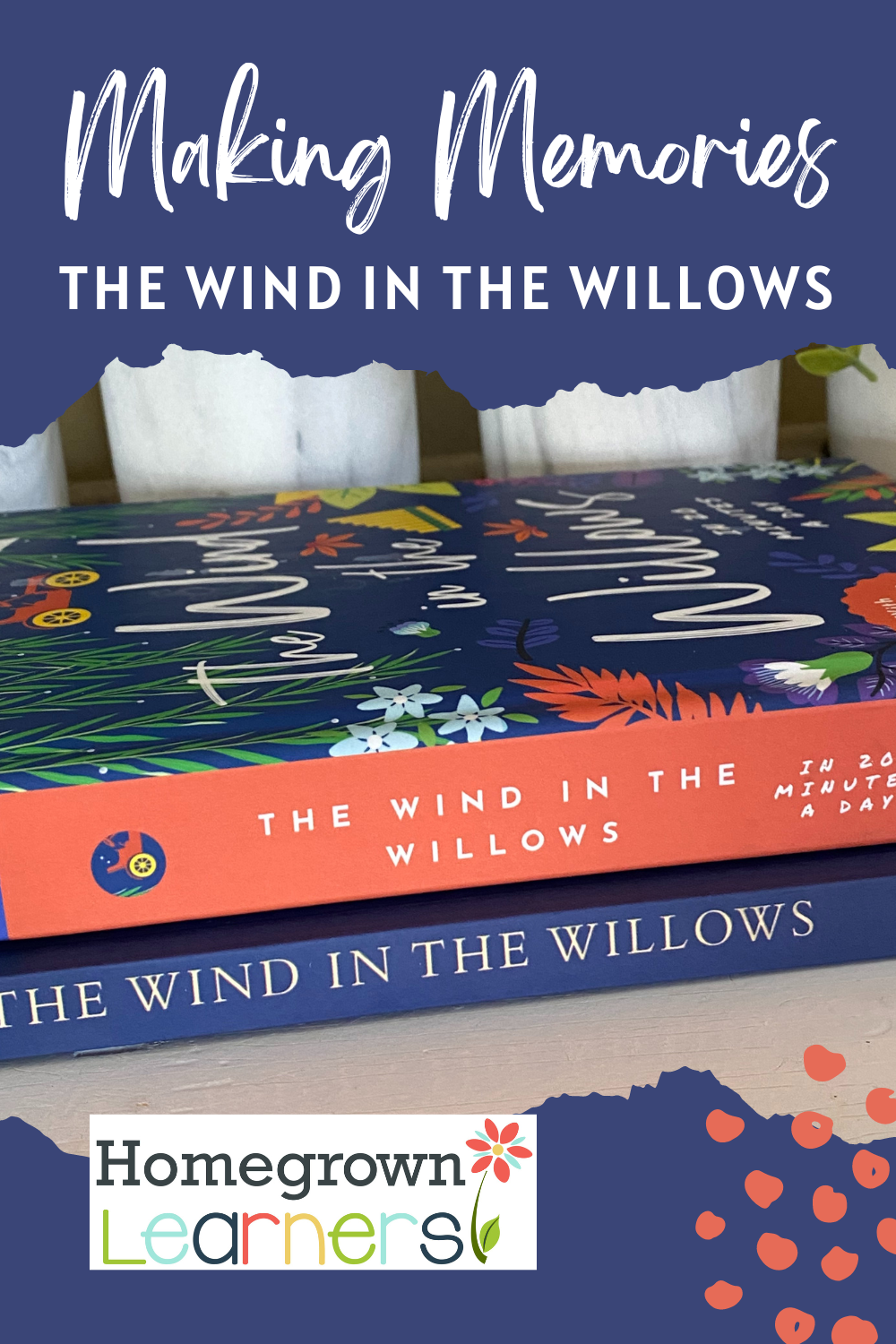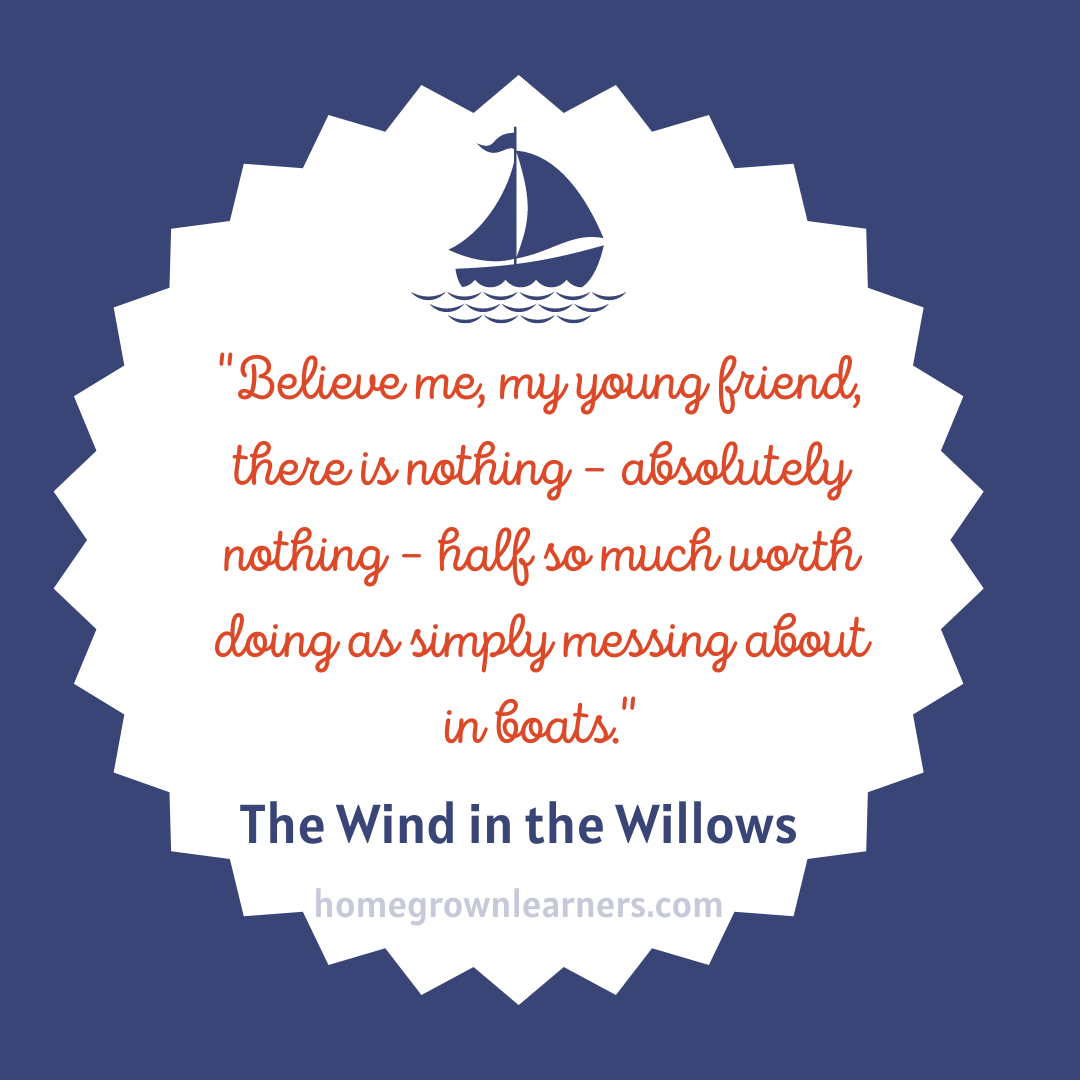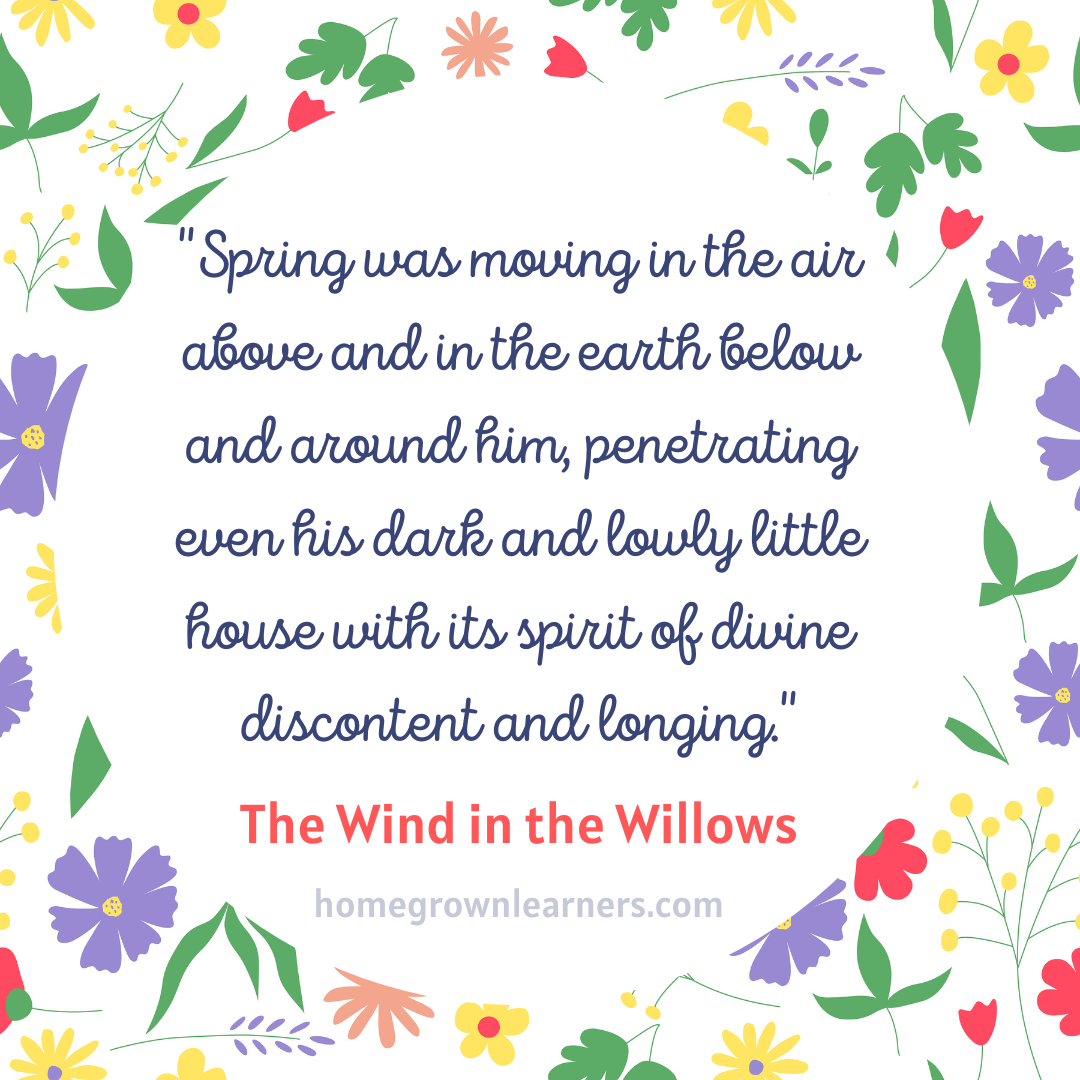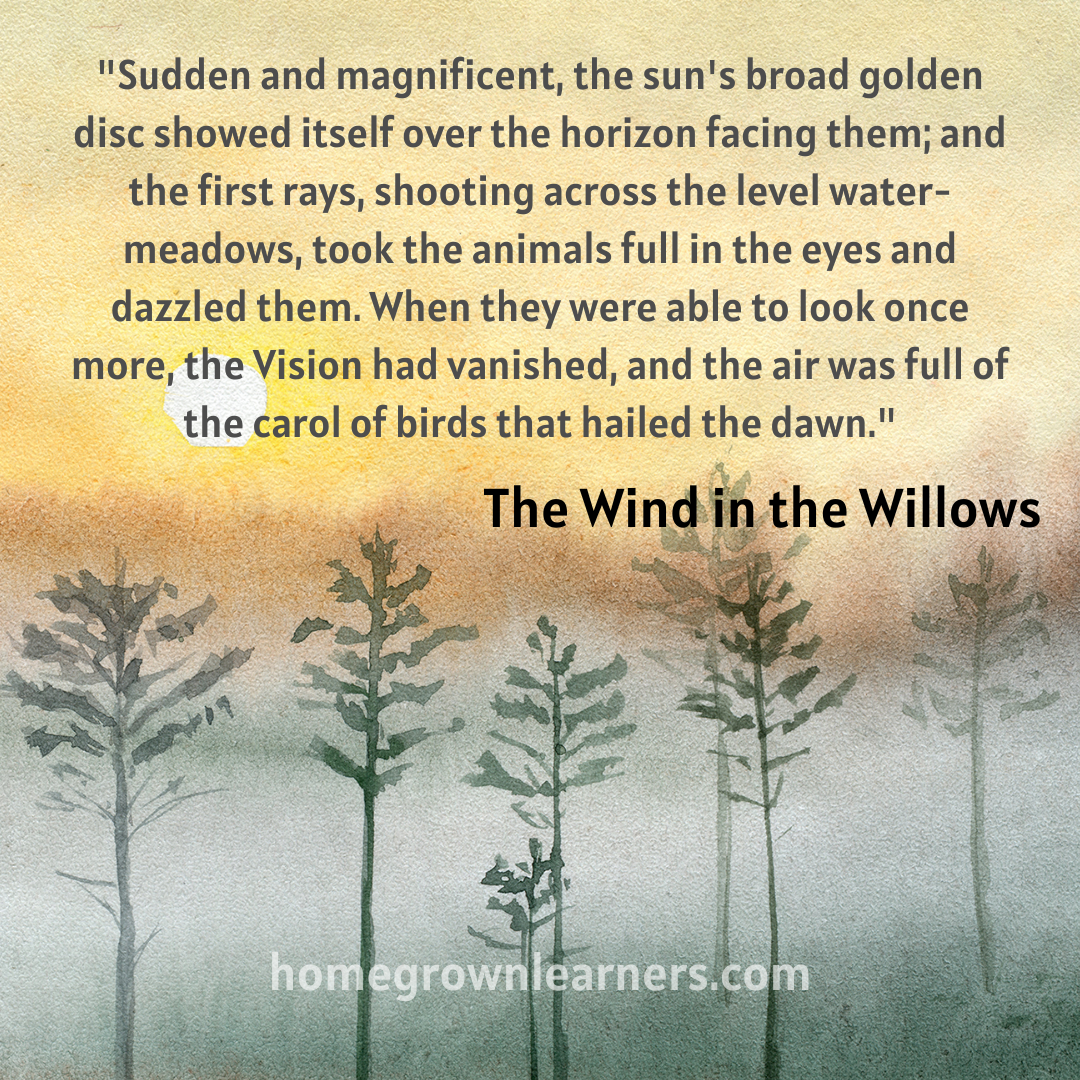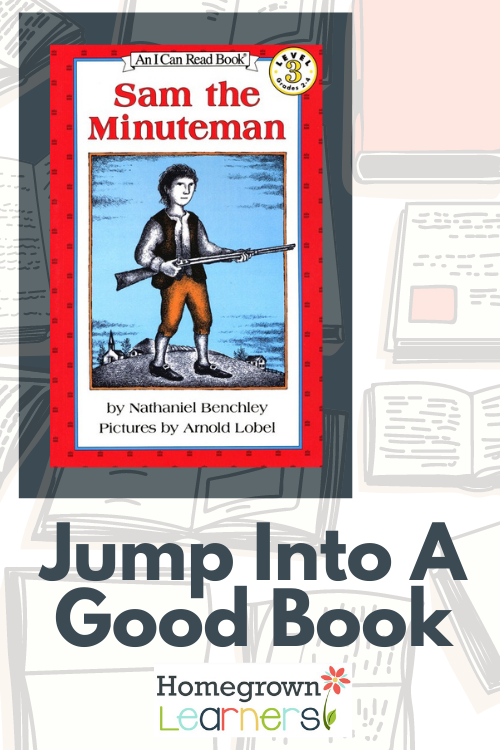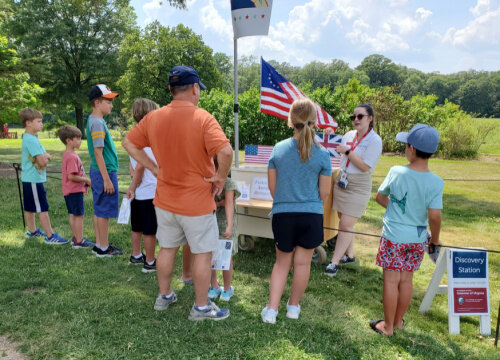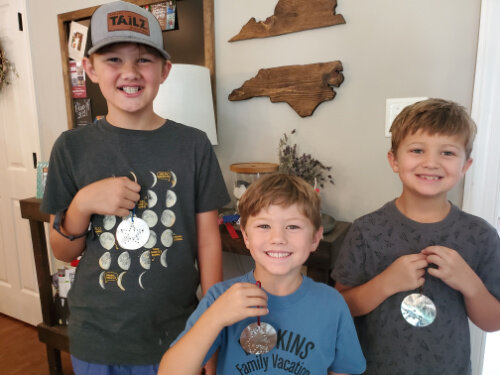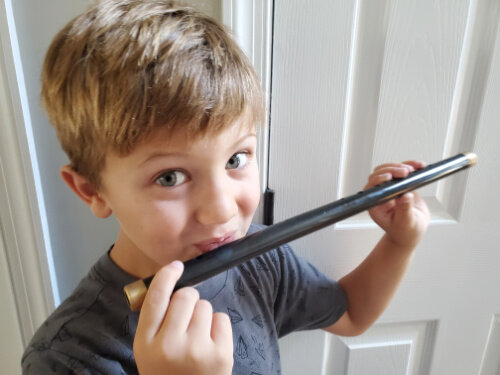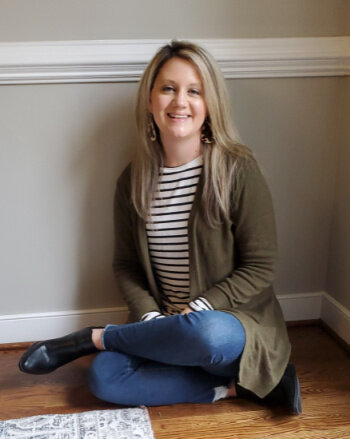'The Mole had been working very hard all the morning, spring-cleaning his little home'.
This beginning sentence of The Wind in the Willows brings back sweet memories from my childhood.
As I read this book as an adult, my senses began to awaken! I could hear my mother’s voice reading to me. I could picture my bedroom with the matching curtains and and bed covering my mom had lovingly sewn for me. We would take turns reading aloud about the adventures of mole, rat, badger, and otter.
I didn’t realize then what a gift she was giving me, and it gave me comfort to realize that as her legacy of reading aloud made an impact on me, surely it will make an impact on my own children. Sometimes it feels as if we labor in vain many homeschooling days, but I assure you - our tenacity, love, and consistency produces fruit for generations!
My mother, who attended a one-room schoolhouse, told me her teacher would read aloud daily after lunch. Seventy-plus years later, in my own little one-room schoolhouse, I would read aloud to my children during lunch each day. Many glorious spring days were spent outside on a blanket sharing books with my children.
Memories were made with stories like Robin Hood, The Hobbit, Paddington, The Box Car Children, The Adventures of Huckleberry Finn, Strawberry Girl - just to name a few!
Beautiful literature has a lasting impact on our children, and I hope this post inspires you to share The Wind in the Willows with your children!
Simple Ideas for Reading The Wind in the Willows Aloud
You might consider The Wind in the Willows daunting, but let me encourage you to begin reading. Giving your children a bit of background before you begin in helpful.
I always had my children memorize the first sentence of a read-aloud. It has become a lovely gift that lives in their memories!
Before You Read The Wind in the Willows Aloud:
The overarching theme of this book is the power of close friends and the courage to make a difference in the lives of others.
Locate England on a map - then find the River Thames. Tell your children this is a story written by Kenneth Graham, first published in 1908.
It is an anthropomorphic story, which means the animals in the story have human characteristics; the author intended each main character to represent a different type of gentleman in Edwardian England.
The story is full of very British humor - which, once they get used to it, will cause most of us laugh out loud.
Ideas While Reading The Wind in the Willows Aloud
Make your reading atmosphere/time fun! In England, there was a tradition called “Elevenses,” which was a short break for snacks around 11 a.m. Why not have your read-aloud at 11:00 with tea (an English MUST) and fun snacks?
Use this Wind in the Willows 20 Minutes a Day book. This handy book contains the story in 20-minute read-aloud segments. It also defines unusual words in the margins and offers a few discussion questions at the end of each part. I have this book and LOVE it!
Keep your children’s hands busy while reading aloud. This Wind in the Willows Adventures of Toad Dover coloring book is lovely. (I’m sure you can also search for coloring sheets online.) My children also loved building with LEGO bricks and knitting while reading aloud.
Create a Read-Aloud door. In our house, it was the basement door - we would write down new words to us on index cards and tape them to the door. Then, I would have the kids illustrate scenes from the book to put on our door. That night, while we were eating dinner, dad could look at the door and the kids could tell him all about the book we were reading!
Favorite Wind in the Willows Resources
You can download The Wind in the Willows for free via Project Gutenberg.
Librivox has fabulous audio recordings of The Wind in the Willows. I have recently reread the book and am listening to the audio with the text in front of me. It’s a lovely experience - something about the British accents makes it more accurate and humorous for me! Parents, this could be such an easy activity for your children with minimal effort from you!
A physical copy of The Wind in the Willows will be a beautiful keepsake for your children.
Memoria Press has exceptional literature guides. They publish one for The Wind in the Willows. We used one for Lassie, Come Home and it added so much depth for my older child.
Add to the experience with this Wind in the Willows playlist. A television series was created based on the book, and this Spotify playlist is adorable.
Let Your Children Be Your Guide!
My children would come up with plenty of activities. I just had to keep up with them!
Maybe a child wants to research and create a snack that would have been enjoyed in England in the early 1900s. Perhaps another child wants to copy favorite quotes from the story in their journal. Or, a tech-savvy child may want to create quote images (like the ones I made for this post), print them, and display them in your school area.
We used to keep a big roll of butcher paper and roll out a piece on the kitchen floor - the kids loved to draw on that while we read aloud.
Be open to possibilities and willing to follow your children. The results will amaze you!
Whatever you do, be intentional about sharing beautiful literature with your children. They may not grow up to be voracious readers (or they may!), but they will always have those memories with them and one day when they are well into adulthood, they might just be inspired to pick up a classic because of the memories you gave them!
The Wind in the Willows: Illustrated ClassicThe Wind in the Willows (Oxford Children's Classics)The Wind in the Willows in 20 Minutes a Day: A Read-With-Me Book with Discussion Questions, Definitions, and More! (Read-Aloud Kids Classics, 5)New York Puzzle Company - Penguin Random House Wind in The Willows - 500 Piece Jigsaw PuzzleThe Wind in the Willows Felt Friends: Beginner-friendly sewing patterns to bring Kenneth Grahame’s classic tale to lifeThe Wind in the Willows Coloring Book: Toad's AdventuresWind in the Willows, Student GuideVintage Poster Book Poster The Wind in The Willows Canvas Painting Posters and Prints Wall Art Pictures for Living Room Bedroom Decor 12x18inch(30x45cm) Unframe-Style

